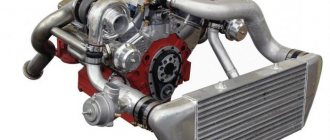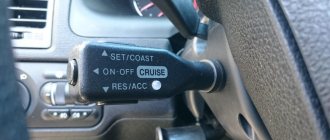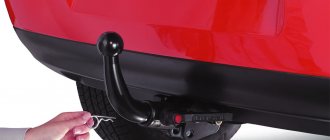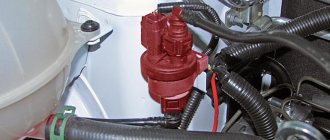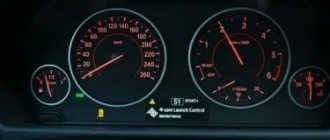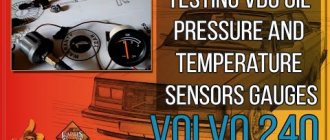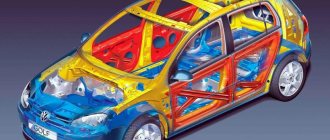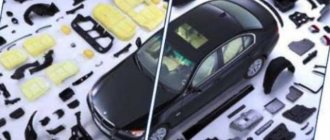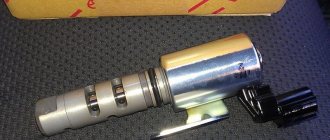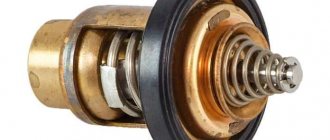From the article, the reader will learn why a sensor and an absorber purge valve are installed on a vehicle. What malfunctions occur with these devices and how to fix them yourself, without resorting to the help of experienced mechanics at a service station.
And here is a little about electrical circuits on Toyota cars.
Problems that lead to breakdown of the fuel pump or even the engine sometimes appear due to malfunctions of secondary devices. New car owners do not pay attention to minor breakdowns, confuse them with other problems and do not go to a service center to have the vehicle undergo a routine inspection.
Such secondary devices include the absorber valve and the gravity valve, located in the same system as the first. A gravity device is needed to block the flow of fuel from the gas tank to the outside when the car overturns.
What is an adsorber for?
Environmental standards provide for restrictions on exhaust gases emitted into the atmosphere by vehicles. Every year the standards become stricter. Car manufacturers have come up with special devices that protect the natural environment from exhaust gases from internal combustion engines.
Such devices are called adsorber. Although it correctly sounds like “Absorber” from the Latin word “Absorbeo” - “to absorb”. These devices are installed on gasoline engines of all vehicles.
This is what adsorbers look like for various car brands:
Adsorber VAZ
Audi adsorber
Toyota adsorber
New car owners are often interested in where the EVAP . This is the name of the equipment that is installed in cars and acts as a trap for harmful vapors. It includes an absorber valve.
Canister valves of various models:
Toyota canister valve
Audi canister valve
VAZ adsorber valve
EVAP stands for Evaporation Emission. In Russian it means the gas tank ventilation system. Comes from the Latin word - Evaporation or evaporation.
Attention! The adsorber is a secondary component in car engines. But its breakdown negatively affects the engine and its components.
Experts advise that if signs of malfunction of this device appear, contact a machine repair service center.
Bumper absorber
This element is fundamentally different from those described above. Its task is to absorb (sorb) the kinetic force of impact in the event of a car collision. It is hidden under the bumper lining and upon impact is crushed, absorbing part of the impact energy. Can be made of rated density foam, monolithic plastic or plastic balls.
Today, such elements are not found on all cars, although they can be installed at a car service center if desired. But most likely, in the near future this will be a mandatory element of passive protection on all cars. At the same time, crash tests will be carried out to test the effectiveness of the design and materials, the element will be improved and become more efficient. As a result, this will really help improve traffic safety.
Where is
On most cars it is located under the ignition coil, on the left side of the engine. To remove it, you need to remove the battery terminals, loosen and remove the mount, and remove all the hoses that are connected to it.
Locations of the adsorber in various brands of cars:
How to replace the adsorber valve
First of all, if the absorber ventilation on the machine does not work, repair is necessary. Regardless of which car the breakdown occurred on (foreign car, Lada Priora or Kalina), the adsorber and its valve should work normally. Otherwise, all the problems discussed above will appear to a greater or lesser extent.
At the same time, we note that replacing the adsorber valve with your own hands in most cases is quite possible in an ordinary garage. This means that it is not always necessary to go to the service.
Replacement is quite simple. The main thing is to choose a valve for installation so that its markings are exactly the same as on the valve that was previously on the machine. After purchasing the required valve, it is enough to remove the terminals from the battery, disconnect the “chip” with wires from the valve, and unscrew the valve fastenings.
Adsorber VAZ-2114: design review, features and causes of malfunction
Then you will need to remove the fittings under the latch and also disconnect the hoses. Then you can remove the valve and its bracket from the adsorber. Now you can install the new valve and reassemble it. At this point the replacement can be considered complete.
The only thing is that on some cars you may still need to reset the error in the ECU memory. By the way, this can be done using a simple solution like ELM327 or other diagnostic equipment.
Adsorber. Why is it needed, how does it work, how to check.
Operating principle of the adsorber
To understand where it is located and how to repair the blower, you need to know the operating principle of the device and the entire system. The absorber device itself is filled with activated carbon, which absorbs harmful substances.
EVAP catches gases from burned fuel as follows:
- Fuel vapor enters the separator. Condensation occurs. The resulting drops flow into the tank.
- Those vapors that have not turned into condensate flow into the absorber. Here the harmful substances they contain are absorbed by activated carbon.
- Gas accumulation occurs. And when the engine starts, they are supplied to the intake manifold.
- Absorption occurs when the engine is not running.
- When the engine starts, this very valve comes into action. It provides air flow from outside.
- Together with the air stream, the accumulated gases in the adsorber return to the engine.
- Here they undergo another burning.
- Now these vapors enter the exhaust system.
Thus, the absorber purge apparatus creates ventilation of the mechanism. Proper operation of the device is silent. During the cold season, the driver may hear a chattering sound on some cars. This is how the device works.
In case of any malfunction, the car owner will hear knocking, grinding, clattering sounds and blame the faulty engine for everything. In fact, the problem may be in the blower. Sometimes the purge sensor fails.
Attention! In order not to personally disrupt the operation of the ventilation system, experts do not recommend filling the car up to the neck of the gas tank. It is also recommended to promptly remove the pistole from the gas tank at gas stations.
Operating principle
As you understand, the maximum amount of fuel vapor is in the tank, and they accumulate in the upper part, closer to the filler neck. If we were looking at carburetor cars, we would be able to see a hole in the plug through which the vapors escape into the atmosphere. But in our case, they enter the separator and turn into liquid form, returning back to the fuel tank. But some of the vapor still does not condense and goes into the adsorber through tubes and a gravity valve.
And then activated carbon absorbs all the vapors. In this mode, the device operates when the ignition is turned off. When it is turned on, the electronic control unit sends a signal to the solenoid valve and it opens. In this case, the adsorber is purged, and all vapors go into the fuel system and burn. Therefore, there are two useful features of this mechanism:
- Improving environmental friendliness by reducing harmful emissions into the atmosphere.
- Reduced fuel consumption. True, this figure is extremely small.
Symptoms of a problem
The driver will feel a malfunction in the device immediately. The following happens to the car:
- engine power decreases;
- dips appear during engine idling;
- when opening the gas tank cap, the car owner hears it making a hissing sound. This indicates that the EVAP system is not ventilated;
- the smell of burning fuel in the vehicle appears in the cabin;
- Gasoline consumption per 100 kilometers increases.
The fuel pump breaks down due to the vacuum occurring in the system. This happens because without ventilation, fuel accumulates in the intake manifold. The engine will idle or may stop completely.
You can check whether the device is faulty or not by sharply pressing the gas pedal while driving. If the knocking and grinding noises remain, then the problem is in the adsorber.
Attention! The device can be adjusted using a special screw. If you tighten it half a turn, you can reduce the natural knocking of the device. When twisted one full turn, the controller will generate an error.
The adjustment itself will make the operation of the unit adequate and soft. It will stop knocking while driving and getting on the nerves of drivers. But in order to unscrew it, the car owner will have to clean the screw from the epoxy resin.
Adsorber failures
Despite the simplicity of the design, the VAZ 2114 adsorber can break and this is determined by several signs. Increasing the pressure in the fuel tank is one of them. It was said earlier that vapors enter the adsorber, but if it breaks down, they simply accumulate in the tank. This can lead to deformation of the latter. You can identify a breakdown very simply - when you unscrew the plug from the filler neck, you can hear a hissing sound, as if air is escaping from the inside.
And a less obvious sign is unstable idle speed. True, this symptom appears somewhat less frequently. The best way to solve problems is to completely replace the device, since its cost is relatively low. The price, depending on the manufacturer, ranges from 600-1200 rubles. But some motorists decide to remove the VAZ 2114 adsorber completely. What is needed for this?
Determining the health of an element
To determine whether the system purge sensor and the device itself are working properly, you can use the error codes on the electronic engine control unit. Or do it mechanically yourself.
The car owner will need the following tools:
- multimeter;
- wire sections.
Absorber testing steps:
- Open the hood and disconnect the block with wires from the valve.
- The dipstick with a negative value is placed on the body. And with a positive one - to the terminal of the wire block under the name “A”. Each pin has its own designation, which can be found in the vehicle’s operating manual. At this point, the valve sensor output is needed.
- Turn on the ignition and look at the multimeter display.
- If it shows 12 Volts, then this means that everything is normal. If no electric current is supplied to it, then the multimeter will show 0. This means you need to check the battery.
Errors of a faulty unit that can be generated by the electronic engine control unit when a scanner is connected:
- break in the control circuit of the absorber purge valve;
- "Check Engine" signal;
- errors 0443, 0449;
- 0451 – is responsible for the readings of sensors in the gas tank. If it lights up, there is a malfunction in the sensors;
- 0442 – there is a leak in the engine ventilation system;
- 0455 - indicates that the leak in the ventilation system is large;
- error P0441.
To check the valve itself for malfunction, you need to remove it. Removal procedure:
- Remove the plunger from the injection syringe.
- Insert it into the outlet fitting on the device.
- Put pressure on him. The piston must move under pressure.
- After this, connect the battery to the electrical part of the valve. Press the piston again.
- If it moves under pressure, it is not working properly. If the piston goes down without resistance, then everything is in order.
Here you can find out where the Toyota starter is located.
How to get rid of the adsorber?
First of all, answer one question: “Do I need to get rid of it?” This device has advantages, albeit minor ones. But for the “operation” to be successful, you will need:
- Buy a filler cap for the gas tank.
- Plug the tubes going from the tank to the adsorber.
- In some cases, change the firmware.
The fact is that when a breakdown occurs, a “Check Engine” alert appears, indicating that there is a breakdown in the car system. To prevent it from appearing, you need to write in the ECU operating algorithm that polling the adsorber sensor is not required. Only in this case will the operation of all vehicle systems be normal.
Of course, it’s worth mentioning the gasoline savings - even if they are small, they are still there. There will be no problems when passing a technical inspection, since the gas analyzer only measures the level of CO in the exhaust. How much gasoline vapor comes out of the tank is not recorded; technicians can only visually determine that the adsorber is turned off or dismantled.
1200 rub. for the photo report
We pay for photo reports on car repairs. Earnings from 10,000 rubles/month.
Write:
Many car owners may be interested in the question of how to check the adsorber and its purge valve when the diagnostics showed it to be faulty (an absorber error popped up). It is quite possible to make such a diagnosis in a garage, however, for this it will be necessary to dismantle either the entire adsorber or just its valve. And to carry out such a test, you will need metalworking tools, a multifunctional multimeter (to measure the insulation value and the “continuity” of the wires), a pump, and a 12 V power source (or a similar battery).
The procedure for removing the adsorber
When purchasing a new vehicle engine ventilation unit, pay attention to the markings. Both should be identical. Otherwise, there will be no compatibility and the valve will not be able to work and provide ventilation to the gas tank.
The replacement procedure is as follows:
- Remove the negative terminal from the battery.
- Open the hood and find the absorber.
- Press the latch that holds the wire block. And disconnect it.
- Unscrew the screws that hold the device in place.
- Disconnect the hoses.
- Remove the bracket and the old piston from the absorber.
- Install a new device.
- Repeat all steps in reverse order.
Attention! To assemble in the same order, you need to mark each device with a marker in what order it was removed.
In this simple way, a new device for venting the EVAP system is installed.
Like all devices, this type of absorber has its positive and negative sides. Due to the disadvantages, experienced car owners most often remove the valve. Although this threatens to destroy the coordinated work of the mechanisms.
“We treat” the adsorber
If a breakdown occurs, the problem needs to be solved as soon as possible, there are four options to solve it, depending on the features, you can: replace the valve, replace the adsorber, try to repair the valve, remove the adsorber, we will consider each option in more detail.
Replacing the adsorber
On a VAZ 2114, replacement is very simple, you can go to a service station, but if you do the procedure yourself it will take about 20 minutes. We dismantle the spare part:
- disconnect the hoses from the throttle;
- disconnect the wires and block;
- remove the purge valve and purge and separator hoses;
- unscrew the three bracket bolts;
- the part has been removed.
- We attach a long pipe to the point where vapor is supplied to the blow-off valve;
- We connect a short hose to the fence from the separator;
- put the spare part in place;
- connect the supply hose to the valve;
- install a purge channel (on the engine cover);
- connect the wiring and block;
- place a tube between the valve and the adsorber;
- the work is finished, connect the power and go.
We repair the valve
The valve is clogged due to bad gasoline, before buying a new one, let's try to fix the old one. If a characteristic smell of gasoline appears in the cabin, then the problem is in the valve pipes, they are replaced by simple replacement, and the problem is revealed by a visual inspection, we look at which pipe has burst, buy a new one and install it.
It happens that there is no breakdown, after visually inspecting the pipes, you may find that everything is intact and working, just one pipe has flown out of its place, in this case, you need to put it in place and tighten the clamp.
- We unscrew the adjusting screw, counting the revolutions (it is filled with epoxy resin, it will be easy to find).
- We drip carburetor flushing into the fittings.
- Holding the valve in the open position, we blow it with a compressor.
- We repeat points 2 and 3.
- We put it in place, screw in the adjusting screw to the previously calculated number of revolutions.
Valve replacement
If the valve breaks due to overheating of the radiator, it cannot be repaired; a new part is needed.
The procedure is simple, let's consider it in order:
- We turn off the power to the car and disconnect the KPA plug.
- We loosen the air control inlet pipe, remove it, and move it to the side.
- We bend the fastening, dismantle the valve (remove the fastening no more than 1 cm).
- Lift the valve along the grooves (you need to pull it up).
- We disconnect the fitting, there are two inlets, the first one can be easily removed, the second one will have problems - on the raised fitting, the fixing tendrils are prying up, on the recessed clamp (it’s easy to do with two people, you’ll have to “sweat” alone).
- We install the new adsorber valve in the reverse order.
Removing the adsorber
This is not recommended, but if there is no money (for a new one) and no desire to understand the problem (fix something), it is removed. In addition to the above-described dismantling of the part, three more procedures need to be performed:
- dig into the ECU (reflash);
- seal the pipes leading to it;
- replace the tank cap (it needs a leaky one).
- The VAZ 2114 adsorber is an important part; it should not be removed.
- You now know how to replace a part, determine if it is broken and try to repair it, so it’s better to do just that.
- If you decide to remove it, remember, now the car is environmentally friendly “Euro 1”, later problems may arise with this.
Positive and negative aspects of adsorber
The advantages of the device include the following protection functions that it performs:
- the car does not emit harmful gases into the atmosphere;
- saving fuel, as unexhausted vapors burn out;
- There is no unpleasant smell from fuel in the cabin. This item is not performed at the proper level on some modifications of vehicles.
The negative aspects of the adsorber include the following parameters:
- instability of engine operation when the valve is dirty;
- takes up a lot of free space under the hood;
- the cost of installing an absorber is high. Accordingly, the vehicle itself becomes more expensive;
- the tank cap may fly off if the valve is not working properly and gases accumulate inside the gas tank;
- if the device fails, this results in the loss of the fuel pump;
- large accumulations of an explosive mixture if the absorber is faulty, but the engine continues to operate. This happens with older car models produced before 2000.
Many car owners remove this device. Since some drivers are sure that the device leads to increased fuel consumption. Others say that it causes the fuel pump to break and the engine itself will not last long.
When removing the absorber, the car owner should know that the tube from the valve must be closed. And adjust the program in the electronic control unit. Therefore, it is better to perform this procedure in the presence of experienced mechanics or at a service center. Although many mechanics do not want to remove the device and will try their best to dissuade the car owner.
How to repair the adsorber and valve
It’s worth noting right away that in most cases both the adsorber and the valve cannot be repaired; accordingly, they need to be replaced with similar new units. However, as for the adsorber, in some cases, over time, the foam in its body rots, which is why the carbon contained in it clogs the pipelines and the solenoid valve of the EVAP system. Rotting of foam rubber occurs for banal reasons - from old age, constant temperature changes, exposure to moisture. You can try to replace the foam separator of the adsorber. However, this cannot be done with all units; some of them are non-separable.
If the adsorber body is rusted or rotten (usually also due to old age, temperature changes, constant exposure to moisture), then you can try to restore it, but it is better not to tempt fate and replace it with a new one.
Similar reasoning is valid for the solenoid valve of the gasoline vapor recovery system. Most of these units are non-separable. That is, the electromagnetic coil is sealed into its body, and if it fails (insulation breakdown or winding break), it will not be possible to replace it with a new one. Same with the return spring. If it has weakened over time, you can try to replace it with a new one, but this is not always possible. But despite this, it is still better to perform a detailed diagnosis of the adsorber and its valve in order to avoid expensive purchases and repairs.
Some car owners do not want to pay attention to the repair and restoration of the gasoline vapor recovery system, and simply “turn off” it. However, this approach is not rational. Firstly, this really affects the environment, and this is especially noticeable in large cities, which are not known for their clean environment anyway. Secondly, if the EVAP system does not work correctly or does not function at all, then under pressure gasoline vapors will periodically escape from under the gas tank cap. And this will happen as often as the temperature in the gas tank increases. This situation is dangerous for several reasons.
Firstly, the tightness of the tank cap is broken, the seal of which is broken over time, and the car owner will probably have to periodically buy a new cap. Secondly, gasoline vapors not only have an unpleasant odor, but are also harmful to the human body. And this is dangerous provided that the car is parked in an enclosed area with poor ventilation. And thirdly, fuel vapors are simply explosive, and if they come out of the gas tank while there is a source of open fire next to the car, a fire hazard will arise with very dire consequences. Therefore, there is no need to “turn off” the fuel vapor recovery system; instead, it is better to keep it in working order and monitor the adsorber and its valve.
Conclusion
Checking the adsorber, as well as its electromagnetic purge valve, is not very difficult even for novice car owners. The main thing is to know where these components are located in a particular car, as well as how they are connected. As practice shows, if one or the other unit fails, they cannot be repaired, so they need to be replaced with new ones. As for the opinion that the fuel vapor recovery system needs to be turned off, it can be attributed to misconceptions. The EVAP system must work normally and ensure not only environmental friendliness, but also safe operation of the vehicle in various conditions.
Adsorber, a term coined from English, denoting a part of a vehicle responsible for absorbing combustion products by liquid (solid) bodies in a special container. The VAZ 2114 adsorber (some call it an absorber) uses activated carbon as an absorbing element, which is what the domestic model is filled with.
Consequences of dismantling the adsorber
A certain part of motorists believe that any measures aimed at improving the environment of the car have a negative impact on the performance characteristics of the power unit. In particular, the adsorber, the need for the presence of which is, indeed, due to the requirements of environmental standards, also came under such criticism. Pessimists argue that this device is not just useless, it is harmful, because instead of saving fuel it produces excessive consumption, instead of improving dynamics it reduces engine response, etc.
As a result, the device (or solenoid valve) is simply dismantled. How justified are such actions, is there any logic to them? From the point of view of the impact on engine operation, if the adsorber is working properly, it is practically zero, since it has virtually no effect on the operation of the fuel system in terms of supplying gasoline to the engine. Are there any savings achieved? Theoretically, yes, although only slightly, since some of the gasoline does not evaporate, but returns to the gas tank.
In practice, it is quite difficult to verify this, especially in quantitative terms. And if you believe the reviews of car owners, then positive materials are much less common than negative ones, although the degree of trust in them is much greater. In any case, you should not expect any miracle from the adsorber, especially regarding fuel economy. To be honest, the environmental contribution can hardly be called tangible, especially compared to the functioning of the catalytic converter.
As for the claims about the harm of the device, they appear to be unfounded. You can remove the adsorber and in 99% of cases you will not feel any changes in the behavior of the engine. However, there is an opinion that since gasoline vapors will no longer condense, you will thereby eliminate all artificial obstacles on the way of fuel to the combustion chamber (valves, sensors, separator, filter).
The procedure for disabling the adsorber itself consists of adding a fine filter (suitable for VAZ carburetor models) to the hose coming from the separator. In this case, gasoline fumes will safely escape into the atmosphere. In this case, the hose coming from the solenoid valve is simply pinched. But since the operation of the adsorber is controlled by the on-board computer, such a design change will be perceived as a breakdown, with the corresponding Check Engine lighting up.
To remove this error, you will need to reflash the ECU. The undoubted disadvantages of such a step include the following: you will make a “feasible” contribution to the deterioration of the environmental situation. Minimal, but still; the smell of gasoline/diesel may appear in the cabin; the same smell will be felt next to the car, but it is far from obvious.
There are also advantages that are also noted by many users: when the adsorber is located in the engine compartment, if it is removed, a lot of scarce space is freed up, because the can of activated carbon itself has a substantial size; unstable operation of the power unit in idle mode usually disappears; there is no need to replace a failed valve or other components of the device. It’s up to you to follow the lead of home-grown experts or adhere to the recommendations of automakers, but if you really belong to that category of the population that is not indifferent to global problems, including environmental ones, a fuel adsorber will be a useful and even necessary element of the car’s design.
Possible defects and diagnostics of the adsorber valve
The electromagnetic device has a winding and an actuator that closes or opens the channel. The reasons for failure of the valve through which the adsorber is purged may be the following:
- Wiring burnout or interturn short circuit.
- Damage to the control circuit.
- Significant wear on the valve working surface and seat surface.
- Violation of tightness due to the entry of sufficiently large mechanical particles into the chamber.
Diagnostics of the EVAP system involves the use of motor testers, with the help of which the error code is determined. The exact cause of the malfunction of the valve designed to purge the adsorber is determined during electrical circuit checks. For these purposes, a digital or dial tester with a mode for determining winding resistance is used. A significant deviation from the specifications indicates a winding break. Defects of the actuator are impossible due to the fact that the device has a non-separable body.
How to disable or remove the adsorber on a car and do you need to reflash the ECU?
You need to understand that when the adsorber is removed, the solenoid valve is turned off, which is directly connected to the controller and controlled by the latter.
This will lead to error p0443, which we already mentioned above. The tubes are also silenced, in particular the one that goes to the intake manifold.
What is the disadvantage of such a shutdown?
The fact is that through the tube that goes to the intake manifold, air is constantly sucked in; even in idle mode, the so-called small purge of the adsorber occurs. At high speeds from 1500 – 2000 and above there is a lot of purging.
If you plug the pipe, which many people do, a certain amount of air will not flow into the intake manifold bypassing the ECU, but the latter still takes them into account.
That is, the controller takes into account one volume of air, but another (smaller) one actually enters. As a result, the amount of fuel is generated by the ECU based on more air than is supplied. This leads to an over-enrichment of the air-fuel mixture.
As a result, the engine does not work correctly, because the mixture is constantly over-enriched where it is and is not needed, and fuel consumption increases.
It is also worth talking about the transient mode of operation of the engine, which can manifest itself when approaching an intersection, a traffic light, lying to a policeman, at the moment when the gas is released.
At this moment, a failure may occur - a decrease in speed below idle. The engine seems to choke, it doesn’t have enough air, the reason is an over-enriched mixture. After a few seconds, the situation is resolved electronically.
Therefore, it would be correct to disable the adsorber in the following ways:
- After removing the device, install a nozzle with a diameter of 1 mm into the tube that goes directly past the mass air flow sensor. This will, at least partially, solve the problem, since only air without gasoline vapors will be supplied in doses.
- The ECU is being reflashed (difficult). If it is impossible to remove the Check error, you may need engine chip tuning, which is expensive.
- Dismantling the entire system except the solenoid valve, which operates idle.
- By installing a resistor (valve emulation) in the electrical circuit at 200 - 250 Ohms and 2 watts. To do this, bend the legs of the resistor and insert them into the valve chip. We secure everything with electrical tape. But this doesn't always help.
How to disable the adsorber on a VAZ 2110, 2112, 2114
Taking into account the recommendations above, we do the following:
- Disconnect the power connector from the valve.
- Disconnect all pipes from the adsorber and remove the latter along with the mount.
- We fix the valve in a place where the plug with wires and pipes will reach.
- Connect a hose with a fuel filter to the lower fitting (see photo below).
- To the upper end fitting we connect the pipe going to the intake manifold.
- We put another filter on the pipe going into the tank, similar to the first one.
With this scheme, when the valve opens, clean air enters the system, albeit without gasoline vapors.
Adsorber - into the furnace! Fuel vapor recovery system VAZ 2110
We exclude the valve
This method is even simpler. We dismantle everything, including the valve. We put a fuel filter on the pipe coming from the gas tank, and we plug the pipe going to the intake manifold with a bolt and clamp.
The consequences of this method are described above, but this method also has the right to life.
As for Priora, Granta, Lada Largus, Gazelle and other cars, the absorber is turned off in similar ways as described above.
Toyota Chaser
It is worth considering one of the foreign cars, for example, the Toyota Chaser.
The shutdown principle is similar to the previous ones:
- Locate the canister valve. It is located near the mass air flow sensor on the air filter housing.
- Disconnect the chip with wires and all pipes from it (Check may light up on the instrument panel).
- Find the adsorber, disconnect the pipes from it and plug it.
- Disconnect the pipe going to the valve from the throttle assembly and plug it with a bolt and clamp.
- Place a fuel filter from a carburetor VAZ on the pipe going to the tank.
What's the catch in flashing from Euro 4 to Euro 2?
Many people change the ECU from Euro-4 to Euro-2, as a rule, they do this when removing the catalyst and installing a blende. At this moment, the canister valve may turn off (on purpose or accidentally), and the ECU does not control the latter and does not control it in any way.
As a result, if the valve malfunctions, the engine will run intermittently, and the error will not be displayed on the instrument panel. To make sure of this, turn off the valve and observe the operation of the motor.
If the version is confirmed, plug the canister pipes and turn off the valve; the controller still does not control it.
